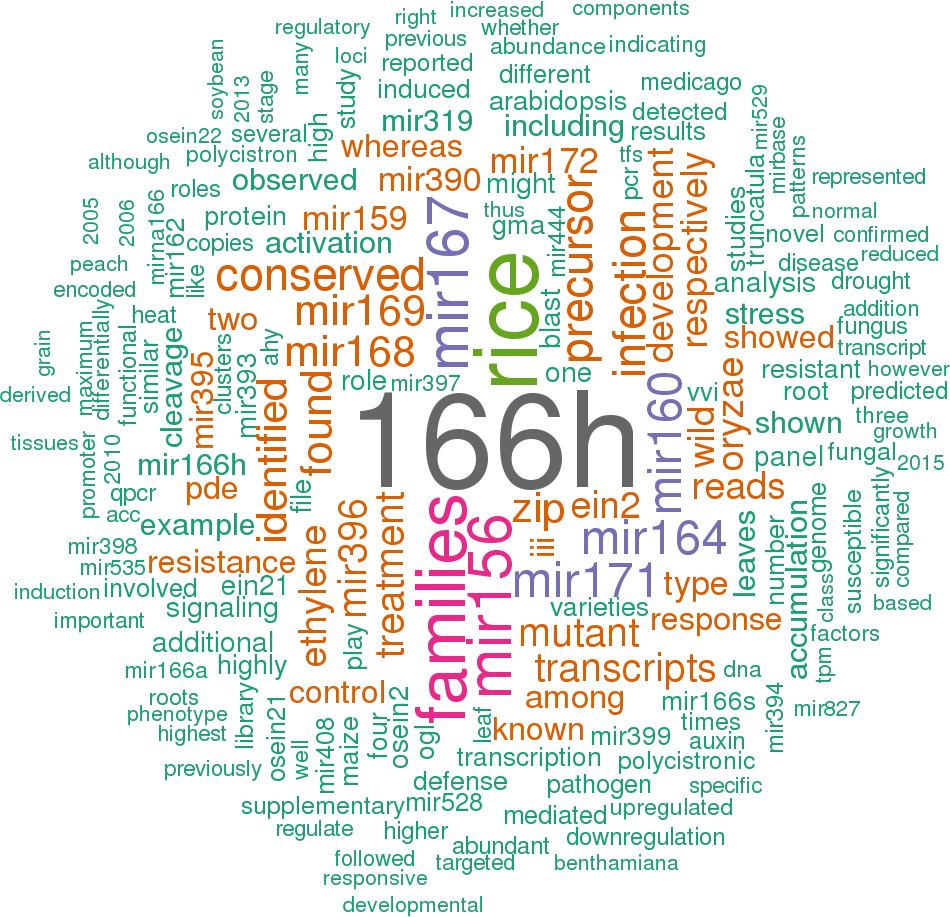Accession
MI0001107
Description
Oryza sativa
osa-MIR166k precursor miRNA
Literature search

74 open access papers mention osa-MIR166k
(411 sentences)
(411 sentences)
Sequence
2129
reads,
1477
reads per million, 2 experiments
auuagguuaaggGGUUUGUUGUCUGGCUCGAGGcauccgggacuccgguuucuccuuuccuacuggaggcgccuaauuuccggcgagcucggagccUCGGACCAGGCUUCAAUCCCUuuaaccaugc
....((((((((((.(((..((((((.(((((((.((((((.(((((((............))))))).((((........))))..))))))))))))).))))))..))).))))))))))....
....((((((((((.(((..((((((.(((((((.((((((.(((((((............))))))).((((........))))..))))))))))))).))))))..))).))))))))))....
Structure
auua U UU C a ------------------a uucuc
gguuaaggGG UUG GUCUGG UCGAGGc uccggg cuccggu c
|||||||||| ||| |||||| ||||||| |||||| |||||||
ccaauuUCCC AAC CGGACC GGCUccg aggcuc gagguca u
cgua U UU A - gagcggccuuuaauccgcg uccuu
Annotation confidence
High
Do you think this miRNA is real?
Comments
This sequence is a predicted paralogue of the previously identified miR166 family [1]. It is predicted to target mRNAs coding for HD-Zip transcription factors.
Genome context
Chr2: 32435003-32435129 [-]
Clustered miRNAs
1 other miRNA is < 10 kb from osa-MIR166k
| Name | Accession | Chromosome | Start | End | Strand | Confidence |
|---|
Database links
Mature osa-miR166k-3p
| Accession | MIMAT0001037 |
| Description | Oryza sativa osa-miR166k-3p mature miRNA |
| Sequence | 97 - UCGGACCAGGCUUCAAUCCCU - 117 |
| Evidence | not_experimental |
| Database links |

|
Mature osa-miR166k-5p
| Accession | MIMAT0022870 |
| Description | Oryza sativa osa-miR166k-5p mature miRNA |
| Sequence | 13 - GGUUUGUUGUCUGGCUCGAGG - 33 |
| Evidence |
experimental
Illumina [2] |
| Database links |

|
References
|

